The Monsters Hiding in Your Air: 5 Air Quality Horrors You Need to Avoid
2024-10-30
The Monsters Hiding in Your Air: 5 Air Quality Horrors You Need to Avoid
As the nights grow colder and longer, stories of monster and ghouls begin to populate once again. But not all monsters are fictional; some monsters are invisible to the naked eye, and yet their reign of terror ensues without proper ventilation!
Here are the five biggest air quality horrors hiding in your indoor spaces—and how to get rid of them.
1. Monster Mould
Mould is a common but often overlooked issue that can seriously impact indoor air quality. Growing in damp, poorly ventilated areas like basements, bathrooms, and kitchens, mould releases tiny spores into the air that can cause respiratory irritation and allergic reactions. In some cases, long-term exposure to mould can lead to chronic health issues.
How to Avoid It: Proper ventilation is key to controlling moisture and preventing mold. Ensure that damp areas are well ventilated by installing exhaust fans in bathrooms and kitchens. Whole-house ventilation systems can also help maintain airflow and reduce moisture in problem areas.
2. The Dust Mite Demon
Dust mites are invisible pests hiding in bedding, carpets, and upholstery, feeding on dead skin cells. While tiny, they can significantly impact air quality. Their droppings and decomposed bodies can trigger allergic reactions, asthma, and respiratory issues, especially in humid environments with poor airflow.
How to Avoid It: Keeping humidity levels low through good ventilation helps reduce dust mites. Regular cleaning and vacuuming with HEPA filters also keep these pests at bay. Proper airflow helps eliminate dust accumulation and creates a less hospitable environment for dust mites.
3. The VOC Villain
Volatile organic compounds (VOCs) are odourless gases that come from products like paints, cleaning supplies, and furniture. In poorly ventilated spaces, they can accumulate to toxic levels, leading to headaches, respiratory issues, and even long-term organ damage.
How to Avoid It: Increase air circulation with mechanical ventilation systems to dilute and remove VOCs. Choose low-VOC products when possible, and keep rooms well-ventilated during activities like painting or cleaning to prevent VOC buildup.
4. The Allergy Army
Pollen, pet hair, and other allergens can easily circulate through your home, even if you don’t have pets or live near trees. These particles trigger allergies and worsen asthma, especially in poorly ventilated areas.
How to Avoid It: A well-designed ventilation system can continuously cycle fresh air and filter out allergens. HEPA filters trap pollen and pet dander, preventing them from building up in your living space.
5. The CO Creature
Carbon monoxide (CO), while naturally occurring, can accumulate to unhealthy levels indoors, especially in poorly ventilated areas. High concentrations can cause drowsiness, headaches, and, in extreme cases, suffocation. Indoor CO levels are often a sign of inadequate ventilation.
How to Avoid It: Ensure proper ventilation by allowing fresh air to circulate throughout your space. Mechanical ventilation systems equipped with air quality sensors can monitor and maintain safe CO levels.
Breathe Easier Today
The quality of the air you breathe indoors is essential for your health and comfort. From mould and dust mites to VOCs and CO, these hidden dangers can be managed or eliminated with the right ventilation. Ventilation not only improves air circulation but also filters out harmful particles and maintains a steady flow of fresh air.
Take control of your indoor air quality and invest in proper ventilation solutions to protect your health and ensure a safer, cleaner living environment. Explore our AIRSENS range today.
 Bathroom Extract Fans
Bathroom Extract Fans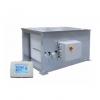 Air Handling Units
Air Handling Units In-line Duct Fans
In-line Duct Fans Heat Recovery Units
Heat Recovery Units Acoustic Cabinet Fans
Acoustic Cabinet Fans Roof mounted fans
Roof mounted fans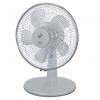 Comfort Cooling Range
Comfort Cooling Range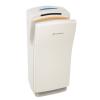 Hand and Hair Dryers
Hand and Hair Dryers  Air Purifiers
Air Purifiers Plate Mounted Axial Flow
Plate Mounted Axial Flow  Cylindrical Cased Axial Flow Fans
Cylindrical Cased Axial Flow Fans 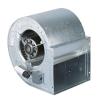 Centrifugal Direct Drive Fan
Centrifugal Direct Drive Fan  Parking Ventilation
Parking Ventilation 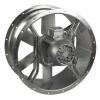 Smoke Extract Fans
Smoke Extract Fans  Atex Fans for Explosive Hazardous
Atex Fans for Explosive Hazardous  Heating Industrial Range
Heating Industrial Range  In-line Duct Fans
In-line Duct Fans Acoustic Cabinet Fans
Acoustic Cabinet Fans Roof mounted fans
Roof mounted fans Atex Fans for Explosive Hazardous
Atex Fans for Explosive Hazardous  Wall or Window Extract Fans
Wall or Window Extract Fans Whole house Extract Units
Whole house Extract Units Kitchen Extract Fans
Kitchen Extract Fans  Kitchen Extract Hoods
Kitchen Extract Hoods  Backward curved centrifugal fans
Backward curved centrifugal fans High pressure centrifugal fans with backward curved impeller
High pressure centrifugal fans with backward curved impeller High pressure centrifugal fans with forward curved impeller
High pressure centrifugal fans with forward curved impeller Centrifugal fans with forward curved impeller
Centrifugal fans with forward curved impeller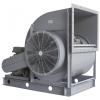 Double inlet centrifugal fans
Double inlet centrifugal fans Radial Centrifugal fans for transportation of materials
Radial Centrifugal fans for transportation of materials Centrifugal fans for furnace applications
Centrifugal fans for furnace applications Mounting Accesories
Mounting Accesories  Electrical Accessories
Electrical Accessories
